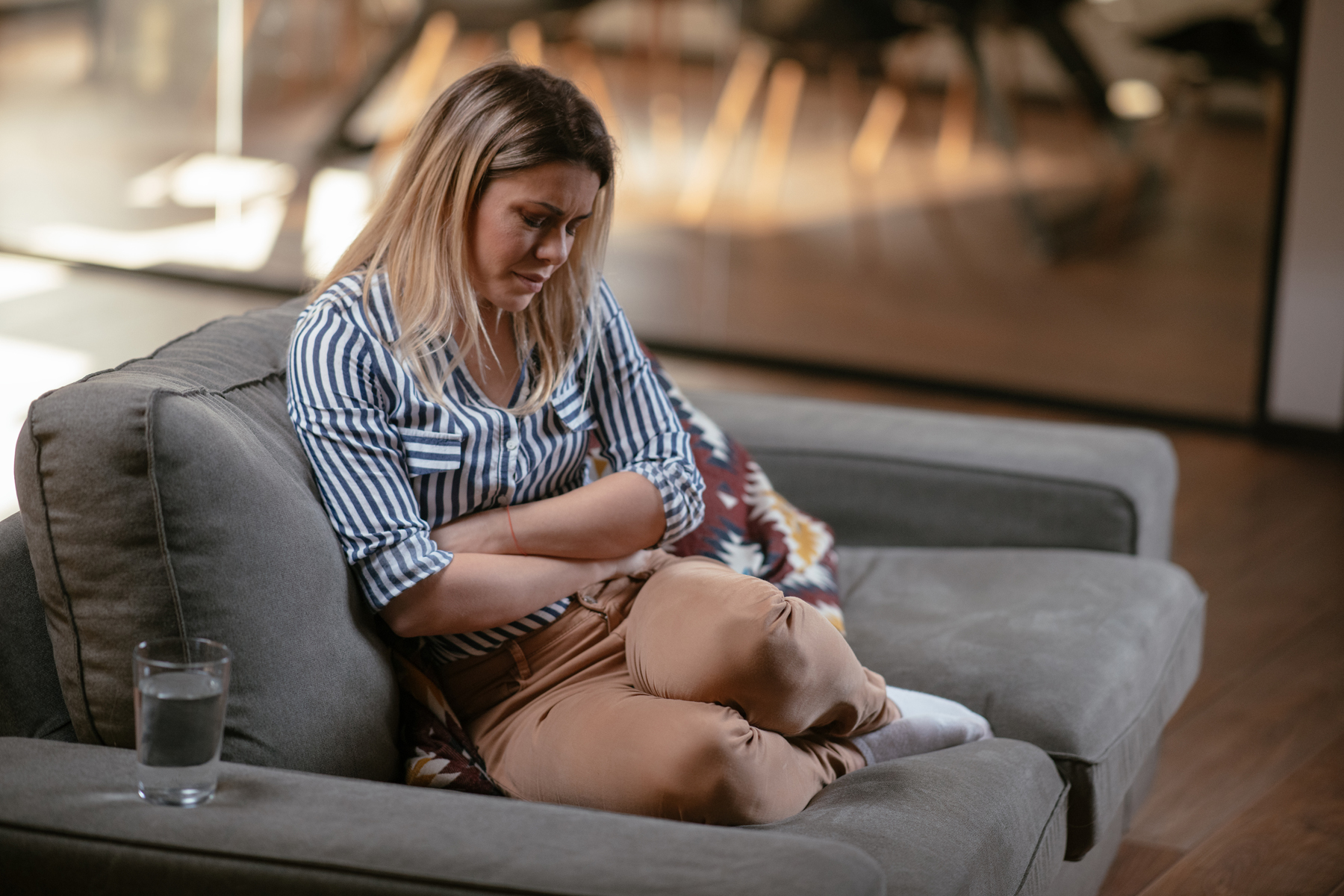Abstract: Which hormones govern the female body, which organs produce them – and what do they impact when they’re not balanced?
Hormones play a pivotal role in our lives from the moment we reach puberty, yet most of us only scratch the surface of understanding their impact.
While many women are familiar with estrogen and progesterone, these are just the tip of the hormonal iceberg. There’s a whole spectrum of female hormones, including luteinizing hormone (LH) and follicle-stimulating hormone (FSH), that are crucial to our well-being.
This blog aims to demystify the world of female hormones. It’s more than just a basic overview; it’s a tool to empower you with knowledge. Understanding these hormones is essential for advocating for yourself, particularly when it comes to medical tests and health challenges during the perimenopausal years.
Let’s dive into the complex and fascinating world of hormones that govern the female reproductive system, and explore how they significantly impact your body, mind, and mood. Consider this your 101 guide to understanding and taking charge of your hormonal health.
In this blog you’ll learn:
- Which hormones govern the female reproductive system
- How these hormones change over time
- What happens when these hormones are out of balance
Which hormones govern the female reproductive system?
Estrogen
Estrogen is a steroid hormone (a hormone that triggers a reaction in the body) associated with the female reproductive system, and the development of female sexual characteristics such as breasts and broader hips.
Estrogen and progesterone work together in the female body to trigger ovulation and keep menstrual cycles regular, and estrogen prompts the lining of the uterus to thicken in preparation of a pregnancy.
Estrogen is developed primarily in the ovaries in females during their reproductive years, as well as by the placenta during pregnancy.
However, estrogen is a hormone found in both men and women, and is also produced in both sexes by the adrenal glands, and in body fat tissues. In both men and women, estrogen plays non-reproductive roles in overall health, such as maintaining:
- Cholesterol levels
- Blood sugar levels
- Bone and muscle mass
- Circulation and blood flow
- Collagen production and moisture in the skin
- Brain function – including your ability to focus
Progesterone
Progesterone is a steroid hormone developed primarily in the corpus luteum – a temporary gland (or cyst) that develops in the female ovaries after the release of an egg during ovulation – and in the placenta during pregnancy.
As progesterone’s primary function is in supporting a body for pregnancy, it is often referred to as a “female hormone.” However, progesterone is also found in men to a lesser degree. Progesterone is produced in smaller quantities by the adrenal glands (found on the tops of the kidneys).
Progesterone plays a key role in the female reproductive system, supporting regular menstrual cycles and supporting the body through the stages of pregnancy by preparing the lining of the uterus to support the implantation and growth of a fertilized egg.
Learn about the impact of low progesterone from the Cleveland Clinic.
Testosterone
If progesterone is commonly known as the “female hormone”, testosterone is the male equivalent. Testosterone levels are typically much higher in males.
Testosterone is developed in the gonads (AKA, the sex organs: testicles and ovaries), as well as in the adrenal glands found atop the kidneys.
The hypothalamus and the pituitary gland are responsible for controlling the amount of testosterone that is produced and released from the gonads. The release of testosterone triggers the release of LH (see below).
Testosterone produced in the female body is often converted within the body to estradiol (estrogen) to maintain the female reproductive system.
If the organs responsible for maintaining this cycle are not functioning correctly or are out of balance, this can lead to hyperandrogenism.
Luteinizing hormone (LH)
Luteinizing hormone (LH) is a chemical produced in the pituitary gland in the brain. In males, LH stimulates the production of sperm. In females, LH is responsible for stimulating ovulation within the female body, and causes the development of the corpus luteum (the gland responsible for most progesterone development in the female body).
LH is produced first in a surge that triggers ovulation, and is then produced at a steady pace for two weeks following ovulation to simulate ovarian progesterone development.
LH causes the corpus luteum to produce more progesterone during the third and fourth weeks of the menstrual cycle, thereby making it possible for the female body to conceive and support the early stages of a pregnancy.
Follicle-stimulating hormone (FSH)
Follicle-stimulating hormone (FSH) is produced in the pituitary gland alongside LH, and affects the function of ovaries and testicles. FSH is named after ovarian follicles (small sacs of fluid that contain egg cells in the ovaries).
FSH is low in children, and begins to develop during puberty with the onset of gonadotropin-releasing hormone (GnRH), which triggers the development of FSH and LH and thereby begins sexual development in both male and female bodies.
In males, FSH and LH trigger the development of testosterone (resulting in body hair growth, voice deepening), and in females, they trigger the development of estrogen (resulting in breast development and the onset of menstruation).
FSH’s primary function in females is to help regulate the menstrual cycle. FSH stimulates the ovarian follicles which grow and prepare eggs for ovulation. As the ovarian follicles increase in size, they begin to release estrogen and low levels of progesterone into the blood.
What happens to the corpus luteum?
After an egg has passed its five days of travel from the ovaries to the uterus during ovulation, and if no sperm has fertilized the egg, then the corpus luteum breaks down.
Progesterone production will then decrease until the next menstrual cycle begins (ie. you get your next period) when FSH levels begin to rise again, triggering the cycle to begin again.
How these hormones change over time
When a young woman begins her menstrual cycle, she is made aware of the fact that menstruation comes with an end date – but we don’t know that the end of the menstrual cycle is a process that can take years, or that it comes with side-effects that can affect health, mood, and sense of self.
What happens when hormone levels decrease as we age?
Androgens (sex hormones, like those discussed above) fluctuate throughout the day, and decrease naturally as we age.
Androgens help both males and females with things like:
- Bone density
- Muscle development
- Puberty and sexual development
- Red blood cell production
- Sexual desire and reproductive function
As androgen levels decrease in the body, these things can be impacted, and women should attend regular tests to assess their overall physical health to monitor these changes within the body.
Women entering their perimenopausal years may notice changes to hair growth (sudden growing of facial hair, or a thinning of hair on the scalp) that is related to androgen levels.
As you age, your LH levels will increase and FSH levels will be consistently elevated as an indicator of menopause and for the rest of a woman’s adult life. At the same time estrogen and progesterone levels will decrease.
There are three different forms of estrogen, which are:
- Estrone, which is the weakest form of estrogen, is typically higher after menopause (continues to be produced when periods stop).
- Estradiol, which is the main form of estrogen produced throughout most women’s lives.
- Estriol, which is the primary form of estrogen produced during a pregnancy.
The combination of high levels of LH and FSH, and low levels of estrogen in the female body are known to cause health concerns such as:
- Dry skin
- Tender breasts
- Weak or brittle bones
- Trouble concentrating (brain fog)
- Moodiness and irritability
- Irregular periods or no periods
Similar side-effects are caused by the decrease of progesterone production. Common complaints in women experiencing a decrease in these hormones include:
- Hot flashes and night sweats
- Cold flashes
- Vaginal dryness
- Discomfort during sex
- Sleep disturbances (especially right before your cycle begins or during perimenopause)
There are readily available methods to manage discomfort during sex, and long-term treatment that can help manage and decrease the impact of other menopausal symptoms – such as hormone replacement therapy.
What happens when hormones are out of balance?
As you’ve probably gathered after reading this far, a woman’s monthly cycles are dictated by the ebbs and flows of reproductive hormones.
Women depend on these hormones to remain balanced, timely, and efficient in order to maintain our equilibrium each and every month – even after menopause.
Fluctuations to the levels of hormones produced in our bodies lead to the monthly “roller coaster of emotions” that many of us experience during our menstruating years and beyond.
During menopause, as hormone levels drop, our serotonin levels also begin to decrease, resulting in mood swings, increased irritability, anxiety, sadness, and even depression.
Hormone production maintains a body’s physical health as well as emotional and mental health. A hormone imbalance can impact physical health in many ways, including:
- Changes to metabolism
- Homeostasis (or one’s internal balance)
- Decreased sexual function
- Challenges with reproduction
- Poor sleep-wake cycles
- And more
Some hormone imbalances are temporary, others are long-term. Some are treatable with medications, and some are managed with diet and exercise.
Signs and symptoms of a hormone imbalance
Our bodies make over 50 different hormones, and all of them are important to maintain healthy bodily functions.
As such, the signs and symptoms of a hormonal imbalance may be varied, and very subtle.
The symptoms of a hormonal imbalance could be caused by other medical conditions, which is why it’s important to monitor any changes to your body and speak with your healthcare provider as soon as you believe something has changed.
Proactively healthy: your health is in your hands
As women, there are certain steps we can take that will help us to monitor our hormone levels and bodily changes as we age. They are simple to do, and very important.
- Attend regular physical checkups. Attending regular checkups that monitor female health (such as Pap tests and routine blood work) are important for keeping track of your hormone levels and the health of your reproductive organs as you age.
- Track your menstrual cycles. Many women only become aware of the impact their hormone production has on their bodies when they are trying to conceive. Track your periods, including your levels of cervical mucus throughout your cycle – and teach your daughters to track theirs – from puberty.
- Tracking data can include details such as the symptoms leading up to a period, the start date, symptoms during your period, the end date. Include as much detail as possible, like changes to your mood or thought patterns leading up to, during, and after your periods.
- This data will help you understand how your menstrual cycles impact your mental health on a monthly basis, will help you if you are trying to conceive a child, and will allow you to notice changes to your cycle as you enter perimenopause.
- There are many apps that can help you do this, or you can use an old-fashioned calendar and journal.
- Keep up to date with women’s health research. Historically, women’s health has been poorly understood by medical professionals. Now, there is research linking menopause with health conditions such as insomnia, cardiovascular disease, dementia, osteoporosis, and more. With this knowledge comes a wealth of preventative measures that you can take that may help to reduce the symptoms of menopause.
Hormone replacement therapy
Hormone replacement therapy (HRT) is the replacement of estrogen or estradiol into the body to manage symptoms of menopause.
The hormone estradiol has been medicalized and is now available as a cream for relief of vaginal irritation, dryness, and pain during sex – common side-effects of menopause due to decreasing sexual reproductive hormone development.
Estrogen progesterone hormone therapy (EPT) is a form of treatment used after menopause has occurred (or, after you have not had a period for twelve months or more).
Hormone replacement therapy has been linked with positive health benefits for women, including:
- A decrease in painful and uncomfortable symptoms of menopause
- A decreased risk of developing Alzheimer’s disease
- A decreased risk of developing osteoporosis
- Improved memory, cognitive function and brain volume
- And more
You can learn more about HRT and women’s health in Dr. Kavita’s book, Lady Parts: Putting Women’s Health Back Into Women’s Hands.
You can learn more about the latest research on women’s health, wellness tips for proactively staying healthy, and supplement options by following Revivele on Instagram, Facebook, and LinkedIn.
What to read next:
How supplements can fill in important nutrient gaps and prevent deficiencies that are linked to common diseases like Alzheimer’s.
How to lower your risk of Alzheimer’s disease by understanding the APOE4 gene.
Parenting during menopause: how to cope when menopause and puberty are happening at the same time in your household.


